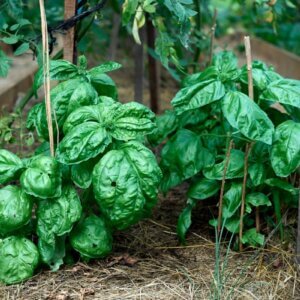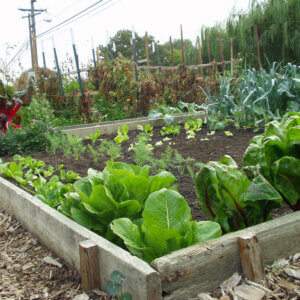Carrots are an easy-to-grow, easy-to-store root crop. Valued for more than a thousand years, the humble carrot gives color, texture, substance, flavor, and life to a diverse array of dishes.
Serve grated to complement salads and sandwiches or chopped to add tone and substance to soups, stews, and casseroles. Sliced, steamed carrots, glazed with butter and a bit of honey, is an ideal side dish to accompany any meat or poultry entrée.
Types Of Carrots
The carrot can be divided into two basic types: Western and Eastern. When carrots were first used as a food source thousands of years ago, they were valued for their seeds and delicate leaves. Oddly enough, their now popular bright orange roots weren’t considered the important part of the carrot!
https://www.instagram.com/p/BeRCR5rnua2/?tagged=carrots
Carrots are munched raw in salads and slaws or boiled, baked, steamed, grilled, or pickled. Carrots are also the main ingredient in many recipes for country wine and a flavorful ingredient in cakes and cookies.
While orange carrots are by far the most common, purple carrots are the sweetest. Dozens of different varieties of carrots give gardeners a diverse array of choice in color, size, flavor, texture, and storage qualities.
Eastern Carrots
The Eastern varieties of carrots, native to Persia, were domesticated more than 1,000 years ago. Eastern carrots are typically yellow, red, black or purple and offer a mild minty flavor. Western types, classified by root shape, originated in the Netherlands about 900 years ago. Dutch growers were the first to develop the orange carrot.
Chantenay Carrots
https://www.instagram.com/p/p1WOqfgzhQ/?tagged=chantenaycarrots
Short and fat, Chantenay carrots are a Western variety of carrots that are broad across the top, tapering to a round tip. Chantenay carrots have pale orange cores and store well. Favorite cultivars include red-cored Chantenay, carson, carson hybrid, cosmic purple, kinko, rumba, royal Chantenay, bolero, and infinity.
Nantes Carrots
https://www.instagram.com/p/Bbe06qbFFaW/?tagged=nantescarrots
Nantes, another Western variety of carrot, is shorter with a round, blunt tip. Popular cultivars include sweetness hybrid, Nelson hybrid, and scarlet Nantes. High in sugar content, the flavorful, sweet vegetable is best served fresh. This brittle type carrot does not store well.
Imperator Carrots
https://www.instagram.com/p/BF_5o9WL05s/?tagged=imperatorcarrots
Imperator carrots are long and slender with high sugar content. Popular cultivars include imperator 58 and sugarsnax hybrid. These are also of the Western variety.
“Baby” Carrots
The carrots found in produce outlets that are marketed as “baby” carrots are not baby carrots. They are the machine-formed product of larger carrots. The sweet core of large carrots is cut as “baby” carrots, and the remainder is used in soups, stews, and baby food.
Consumers love the convenience but question why they should pay the high price when carrots fresh from the garden, with twice the flavor, are readily available. Home gardeners can enjoy authentic baby carrots by harvesting young carrots as they thin garden carrot rows.
Soil Preparation
Carrots, a hardy root vegetable, are planted in early spring and harvested in the fall. Carrots require nutrient-rich, loose soil that retains moisture but drains well. Carrots cannot thrive in soggy soil.
Carrots also fail to flourish if the soil is too acidic, and they do best in soil with a pH range of 6.0-6.8. To prevent plant disease, rotate carrot-planting sites. Do not plant carrots in the same soil more often than once every four years.
https://www.instagram.com/p/BG6wZv-HJN7/?tagged=growingcarrots
If you want a more detailed report, gather soil samples to take to your local county extension office for a nutrient and pH analysis.
Cultivate the soil to a minimum of 12 inches, removing roots, rocks, clods, pebbles, and debris. Carrots require lots of moisture, plenty of sunshine, soil free from stones, and rich in organic material. If the earth is hard-packed or rocky, carrot roots will be forked, branched, twisted or otherwise deformed.
That being said, deformity in shape does not affect the carrot’s flavor, color, texture, or nutrient content!
https://www.instagram.com/p/BcF4GfygTzm/?taken-by=imperfectproduce
Enhance soil nutrients with a generous addition of well-aged herbivore manure (cow, sheep, horse, mule, llama, goat) or well-rotted garden compost, and work in well. Rake the soil to prepare the surface of the seedbed. Space rows 12-18 inches apart.
Planting Carrots
Root vegetables such as turnips, parsnips, beets, radishes, and carrots are planted directly into the garden early in the spring. Carrot seeds can be planted when soil temperature is as low as 40 degrees Fahrenheit. Good news for you cold-weather homesteads: Young seedlings can tolerate a light frost.
- Plant carrot seeds ½-inch deep, and ½-inch apart. Use seed tape or pelleted seeds to make planting and thinning easier.
- Cover with soil and water lightly.
- Carrots germinate unevenly over one to seven days. Expect to see the first bit of greenery in one to three weeks.
- Keep soil evenly moist. Water lightly every day, to encourage germination and early root development.
- When carrot plants are 2-3 inches tall, thin seedlings to reduce competition from neighboring plants.
- Clip plants off at the soil level rather than pulling to avoid disturbing nearby plants.
- Thin developing carrots to 2-inch spacing.
Enjoy tender, sweet, young carrots from early summer into late fall by making multiple plantings, two to three weeks apart. Maximize garden growing space by planting radishes on top of a carrot crop to define planting rows.
https://www.instagram.com/p/BVu7KcsgGfi/?tagged=carrotsandradishes
Radishes are ready for harvest in about five to six weeks. Fast-growing radishes develop before the slower maturing carrots.
Remember: Watering Is Key!
Correct watering makes the difference between a so-so carrot crop and an abundant harvest. Carrots require a minimum of 1 inch of water a week, either from rainfall or irrigation. Soak the grown thoroughly with each watering to help promote strong root development.
Health Benefits of Carrots
The many scientific studies indicating that eating carrots may help lower the risk of cancer are just one of the many reasons for including carrots in a plant-based diet. Carrots are also an ideal source of beta-carotene, which the body converts into vitamin A. Vitamin A is a vital substance, required for healthy vision.
Carrots are cholesterol and fat-free, low in organic sodium, and are an excellent source of vitamins B, B6, C, D, E, and K. Carrots are also a healthy source of calcium, potassium, phosphorous, copper, manganese, niacin, folate, and thiamin as well as an ideal source of calcium pectate.
https://www.instagram.com/p/r-bqqdp–i/?tagged=carrothealth
Calcium pectate is a pectin fiber that scientific studies have shown to have cholesterol-lowering properties. The health-promoting pectin in carrots helps lower serum cholesterol levels because soluble pectin fibers bind to bile acids.
Carotenoids are the organic pigments that give vegetables and fruits their vibrant color. Research studies indicate that diets high in carotenoids help lower the risk of cardiovascular disease. Health conscious people following a plant-based diet high in carotenoids derived from natural foods also exhibit substantially lower mortality from a diverse array of chronic illnesses.
https://www.instagram.com/p/BS9XUYzj9e-/?tagged=carrotbenefits
Low-calorie carrots are abundant in the carotenoids lutein, alpha-carotene, and beta-carotene. Our body converts beta-carotene into vitamin A. Vitamin A plays a critical role in bone growth, reproduction, vision, and regulation of the immune system.
The Benefits Of Cooked Carrots
Although crisp and crunchy raw carrots are a flavorful snack and delicious addition to salads and slaw, cooked carrots offer substantially more health benefits. Research studies indicate that only 3 percent of the beta-carotene in raw carrots releases during the digestive process. The amount of beta-carotene is improved up to 39 percent by juicing, pulping, cooking, and adding a bit of olive oil.
Beta-carotene is a powerful antioxidant that helps slow down cell aging. A 2002 study, published in the Journal of Agriculture and Food Chemistry, reports that cooking carrots increases their level of beta-carotene. A research study, at the University of Arkansas, notes the antioxidant power of cooked carrots was, on average, 34 percent higher than for raw carrots.
https://www.instagram.com/p/BY3pmmyFcLZ/?tagged=cookedcarrots
A study published by England’s Newcastle University School of Agriculture reports that the potent anti-cancer properties of carrots remain if the vegetable is not cut up before cooking. The study indicates carrots boiled before they are cut, contain up to 25 percent more of the poly-acetylene antioxidant falcarinol, a potent anti-cancer compound.
Containing a high amount of dietary fiber, regular consumption of the root vegetable is an effective, natural remedy for chronic constipation.
Scientific research indicates that the powerful anti-inflammatory properties found in carrots can also help significantly in reducing the pain and swelling of gout, arthritis, rheumatism, and other painful inflammations.

Based on the number of consumers that purchase carrots on a weekly basis, the sweet and flavorful root is considered America’s favorite vegetable.
Plant Description
Native to the area known today as Afghanistan, carrots (Daucus carota) are part of the plant family Umbelliferae. The name refers to the umbrella-like flowers that distinguish plants in this botanical family.
Other commonly known members of the Umbelliferae family include fennel, anise, parsnips, cumin, caraway, and dill. There are many different varieties of carrots ranging from as small as 2 inches to as long as a yard.
https://www.instagram.com/p/BeHFAGKHARs/?tagged=umbelliferae
An herbaceous plant, or in other words a biennial, planted as an annual, containing up to 87 percent water, carrots are orange in color, although some varieties are white, yellow, red, or purple. Carrots have a sweet and mildly minty taste.
Although wild carrots are found in many parts of the world, the domesticated carrot is more flavorful and less woody than those harvested wild. Both the taproot and the leaves of the carrot are edible. However, the fern-like, medium green leaves are quite bitter.
References
- Types of Carrots, University of California Berkley Wellness
- Carrots, United States Department of Agriculture
- Growing Carrots And Other Root Vegetables In The Garden, University of Minnesota Extension










































Leave a Reply